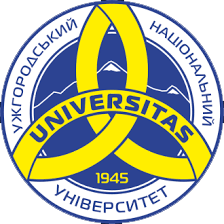BIOCHEMICAL MARKERS AND NEUROPSYCHOPHYSIOLOGY OF THE BURNOUT`S PHENOMENON
DOI:
https://doi.org/10.32782/psy-visnyk/2024.3.4Keywords:
burnout, biochemical markers, neuropsychophysiology, mental health, professional efficiencyAbstract
The article highlights the problem of burnout as an important component of specialist`s professional efficiency. For a deeper understanding of the concept, the definition and main manifestations of this phenomenon are revealed. Attention is focused on the etymology of the term «burnout». It is determined that this condition negatively affects mental health and professional activity in particular. The role of biochemical markers and neuropsychophysiological aspects in the development of burnout, in particular their relationship with stress and adaptation processes, is analyzed, and predictors of burnout development are identified in a reductionist manner. The methodology is based on the analysis of theoretical and empirical studies of the above-mentioned issues and on the principles of systematicity, scientificity and verification. The scientific novelty of the study is to expand the understanding of the physiological component of the burnout`s phenomenon, taking into account pathological manifestations and criteria. Modern scientific research in this area has been systematized in order to better understand the mechanisms and consequences of this complex phenomenon, which is relevant for further research and development of effective strategies for the prevention and management of emotional burnout. It is emphasized that burnout should be understood as a multidimensional construct that includes a complex cascade of biochemical reactions and physiological processes at the level of all organs and systems, which manifests itself in the form of behavioral and personal changes and leads to exhaustion, depersonalization, reduced performance and reduction of one’s own achievements. An in-depth study of the neurophysiological correlates of this phenomenon will allow us to deepen the diagnosis and develop a correction program to prevent the development or reduce the manifestations of the syndrome, which will have a positive impact on professional performance and restoration of mental health in general.
References
World Health Organization. International Classification of Diseases: Burnout an “occupational phenomenon”, Geneva, 2019.
Foley P., Kirschbaum C., Human hypothalamus–pituitary–adrenal axis responses to acute psychosocial stress in laboratory settings, Neuroscience & Biobehavioral Reviews, 2010,Volume 35, Issue 1, pp. 91–96.
Sapolsky R.M. Glucocorticoid toxicity in the hippocampus. Temporal aspects of synergy with kainic acid. Neuroendocrinology. 43(3),1986, pp. 440–444.
Savic I. Structural changes of the brain in relation to occupational stress. Cereb Cortex. 25(6), 2015, pp. 1554–1564.
Blix E, Perski A, Berglund H, Savic I. Long-term occupational stress is associated with regional reductions in brain tissue volumes. PLOS One. 8(6): 2013.
Golkar A, Johansson E, Kasahara M, Osika W, Perski A, Savic I. The influence of work-related chronic stress on the regulation of emotion and on functional connectivity in the brain. PLOS One. 9(9): 2014.
Durning S.J., Costanzo M., Artino Jr. A.R., Dyrbye L.N., Beckman T.J., Schuwirth L., ... & van der Vleuten C. Functional neuroimaging correlates of burnout among internal medicine residents and faculty members. Frontiers in psychiatry, 4, 131, 2013
Tops M., Boksem M.A., Wijers A.A., Van Duinen H., Den Boer J.A., Meijman T.F., & Korf J. () The psychobiology of burnout: are there two diff erent syndromes? Neuropsychobiology, 55(3–4), 2007, pp. 143–150.
Sertoz OO, Binbay IT, Koylu E, Noyan A, Yıldırım E, Mete HE. The role of BDNF and HPA axis in the neurobiology of burnout syndrome. Prog Neuropsychopharmacol Biol Psychiatry. 32(6), 2008, pp. 1459–1465.
McEwen BS., The neurobiology of stress: from serendipity to clinical relevance. Brain Res. 886(1–2), 2000, pp. 172–189.
Ohman L, Nordin S, Bergdahl J, Birgander LS, Neely AS., Cognitive function in outpatients with perceived chronic stress. Scand J Work Environ Health. 33(3), 2007, pp. 223–232.
Oosterholt BG, Maes JH, Van der Linden D, Verbraak MJPM, Kompier M.A.J., Cognitive performance in both clinical and non-clinical burnout. Stress, 17(5), 2014, pp. 400–409.
Bratis D., Tselebis A., Sikaras C., Moulou A., Giotakis K., Zoumakis E., & Ilias I. Alexithymia and its association with burnout, depression and family support among Greek nursing staff . Human Resources for Health, 7(1), 72, 2009.
Colonnello V, Carnevali L, Russo PM, Ottaviani C, Cremonini V, Venturi E, Mattarozzi K. Reduced recognition of facial emotional expressions in global burnout and burnout depersonalization in healthcare providers. PeerJ. 2021 Jan 13;9:e10610.
Yao Y., Zhao S., Zhang Y., Tang L., An Z., Lu L., Yao S. Job-related burnout is associated with brain neurotransmitter levels in Chinese medical workers: a cross-sectional study. J Int Med Res. 2018 Aug;46(8):3226-3235.
Lee R.S, Sawa A., Environmental stressors and epigenetic control of the hypothalamic-pituitary-adrenal axis. Neuroendocrinology. 100(4), 2014, pp. 278–287.
Bakusic J., Schaufeli W., Claes S., Godderis L. Stress, burnout and depression: a systematic review on DNA methylation mechanisms. J Psychosom Res. 92, 2017, pp. 34–44.
Alasaari J.S, Lagus M., Ollila H.M., Toivola A., Kivimaki M., Vahtera J., Kronholm E., Harma M ., Puttonen S., Paunio T. Environmental stress affects DNA methylation of a CpG rich promoter region of serotonin transporter gene in a nurse cohort. PLOS One. 7(9), 2012:e45813.
Hiraiwa M., Campana W.M, Mizisin A.P., Mohiuddin L., O’Brien J.S. Prosaposin: a myelinotrophic protein that promotes expression of myelin constituents and is secreted after nerve injury. Glia. 1999 Jun; 26(4), pp. 353–360.






